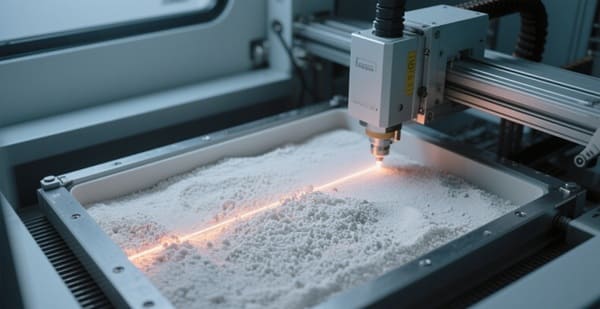Types of Sintering Techniques in Manufacturing of Ceramics
Sintering is one of the most critical steps in ceramic manufacturing, directly influencing the final density, strength, and microstructure of ceramic products. Without proper sintering, ceramics would remain porous, brittle, and functionally inadequate for advanced applications. This article explores the types of sintering techniques used in the manufacturing of ceramics, highlighting their mechanisms, advantages, and industrial use cases. As ceramic materials find increasing applications in electronics, aerospace, and magnetics, the need to master sintering technologies becomes more urgent. Choosing the right technique can define the difference between innovation and inefficiency.
At Advanced Ceramic Hub, we specialize in high-quality ceramic powder products, ensuring optimal performance for industrial and scientific applications.
What Is Sintering and How Does It Work in Ceramics?
Sintering is the process where ceramic powders are compacted and heated below their melting point to achieve densification. It allows ceramic particles to bond together, reducing porosity and increasing mechanical integrity. The effectiveness of this process depends on the sintering temperature, time, and particle size of the ceramic material.
Basic stages of sintering:
- Particle rearrangement
- Neck formation and growth
- Pore elimination
- Grain growth
Understanding this mechanism is essential for selecting suitable sintering parameters that yield high-performance ceramic parts. Sintering transforms raw powder into a cohesive and functional material that meets mechanical and thermal demands.

What Are the Main Types of Sintering Techniques Used in the Manufacturing of Ceramics?
Different ceramics require different sintering approaches depending on particle size, application, and desired microstructure. Each method offers a unique balance of processing speed, energy efficiency, and material performance. Understanding these techniques enables better decision-making during manufacturing.
| Sintering Method | Description | Temperature Range | Applications |
| Conventional Sintering | Uses furnace heating over several hours | 1000–1800°C | Structural, dielectric ceramics |
| Hot Pressing | Applies pressure during heating | 1200–1800°C | Transparent and dense ceramics |
| Spark Plasma Sintering | Uses electric pulses and pressure | 600–1400°C | Nanostructured, magnetic ceramics |
| Microwave Sintering | Uses microwave energy for rapid heating | 800–1600°C | Fast processing, fine ceramics |
| Cold Sintering | Uses solvents and pressure at low temperature | <300°C | Low-temperature ceramics |
Each technique optimizes different physical properties. Choosing the right sintering method ensures product reliability, performance, and cost-efficiency.
Explore our high-quality ceramic product.
How Does Conventional Sintering Work and When Is It Used?
Conventional sintering is the most established method. It involves placing compacted green bodies into a high-temperature furnace for prolonged heating. The gradual temperature increase facilitates particle bonding and densification.
Advantages of conventional sintering:
- Simple setup and scalable
- Suitable for a wide range of ceramics
- Compatible with batch production
Although it’s slow and may cause grain coarsening, conventional sintering remains popular for its accessibility and effectiveness in producing standard ceramic parts. It’s widely applied in alumina and zirconia manufacturing.
What Are the Benefits of Using Hot Pressing in Ceramic Manufacturing?
Hot pressing enhances ceramic density by combining high temperature with uniaxial pressure. This reduces porosity and ensures minimal defects in the final product. It is suitable for high-precision applications.
Benefits of hot pressing:
- Produces nearly fully dense ceramics
- Enhances mechanical and optical properties
- Suitable for hard-to-sinter material
Though costly and limited to simple shapes, hot pressing is ideal for components requiring excellent strength and transparency. It’s favored for optical ceramics and high-performance substrates.
Why Is Spark Plasma Sintering Popular for Advanced Ceramic Applications?
Spark Plasma Sintering (SPS) offers fast densification by applying pulsed electric current along with pressure. This reduces sintering time and controls grain growth, making it suitable for nanostructured ceramics.
Applications of SPS:
- Nanocrystalline magnetic ceramics
- Thermoelectric ceramics
- Composite ceramics
SPS is increasingly used in labs and industries where thermal conductivity, density, or microstructural control is critical. It stands out as a key method in the future of advanced ceramics.
How Does Microwave Sintering Improve Efficiency in Ceramic Production?
Microwave sintering utilizes microwave energy to heat ceramic materials internally, resulting in faster and more uniform heating. It’s especially beneficial for materials sensitive to thermal gradients.
Advantages of microwave sintering:
- Rapid and uniform heating
- Energy savings
- Finer grain size due to short processing time
This method is gaining popularity for complex-shaped ceramics and lean manufacturing. Microwave sintering is best suited for precise, energy-efficient ceramic processing.
What Makes Cold Sintering a Low-Energy Solution for Ceramic Manufacturing?
Cold sintering achieves densification at temperatures below 300°C using pressure and a transient liquid phase. This technique drastically reduces energy requirements while enabling ceramic-polymer integration.
Why choose cold sintering:
- Low energy consumption
- Compatible with hybrid materials
- Enables integration with polymers or electronics
This technique is growing in use for multilayer devices and soft magnetic ceramics. Cold sintering supports eco-friendly manufacturing without compromising functionality.
How Do These Sintering Techniques Compare in Performance and Cost?
Evaluating the relative strengths and limitations of each sintering technique helps in selecting the optimal method for your specific ceramic application. Here’s a comparative overview:
| Method | Relative Cost | Density Achieved | Typical Use Case |
| Conventional Sintering | Low | 85–95% | Bulk ceramics, general use |
| Hot Pressing | High | >98% | High-strength, optical ceramics |
| SPS | Medium-High | >98% | Nanoceramics, magnetic materials |
| Microwave Sintering | Medium | 90–98% | Fine ceramics, fast production |
| Cold Sintering | Low-Medium | 85–95% | Low-temp electronics, soft ceramics |
Cost, complexity, and performance differ across methods. Choosing the right match boosts quality and cost-effectiveness.
How Do Different Ceramics Respond to Sintering Techniques?
Different ceramics respond uniquely to sintering based on their chemical composition and structure. Some require higher temperatures or pressure, while others benefit from rapid or low-temperature techniques.
| Ceramic Material | Preferred Sintering Method | Key Considerations |
| Alumina | Conventional, Microwave | Cost-effective, general-purpose use |
| Zirconia | Hot Pressing, SPS | High strength, thermal shock resistance |
| Ferrite | Conventional, SPS | Magnetic behavior, low cost |
| Silicon Nitride | Hot Pressing, SPS | High strength, wear resistance |
| Glass Ceramics | Conventional, Microwave | Good transparency, complex shapes |
Selecting the right ceramic and sintering method together ensures the final product meets technical and operational demands.
Request a custom quote for various ceramic product.
FAQ
This section addresses common questions from engineers and manufacturers regarding sintering challenges, process choices, and performance expectations.
| Question | Answer |
| What is the most energy-efficient sintering method? | Cold sintering and microwave sintering use less energy than traditional methods. |
| Does sintering always require high temperatures? | No, cold sintering can achieve densification below 300°C. |
| Can sintering methods be combined? | Yes, hybrid sintering (e.g., microwave + pressure) is an emerging area. |
| Which method is best for magnetic ceramics? | SPS and hot pressing are preferred for dense, high-performance magnetic parts. |
| How to prevent defects during sintering? | Use controlled atmosphere, uniform heating, and optimized powder compaction. |
Conclusion
Mastering sintering techniques is essential for achieving high-performance ceramic products. Whether you’re working with magnetic ceramics, structural parts, or electronic substrates, the sintering method directly impacts density, strength, and thermal stability. By understanding and selecting the optimal technique, manufacturers can push the boundaries of ceramic functionality. As technologies evolve, so will sintering innovations, making it a cornerstone of next-generation ceramic design. Thoughtful selection today leads to superior performance tomorrow.
Looking for high-quality ceramic powder product? Contact us today!
